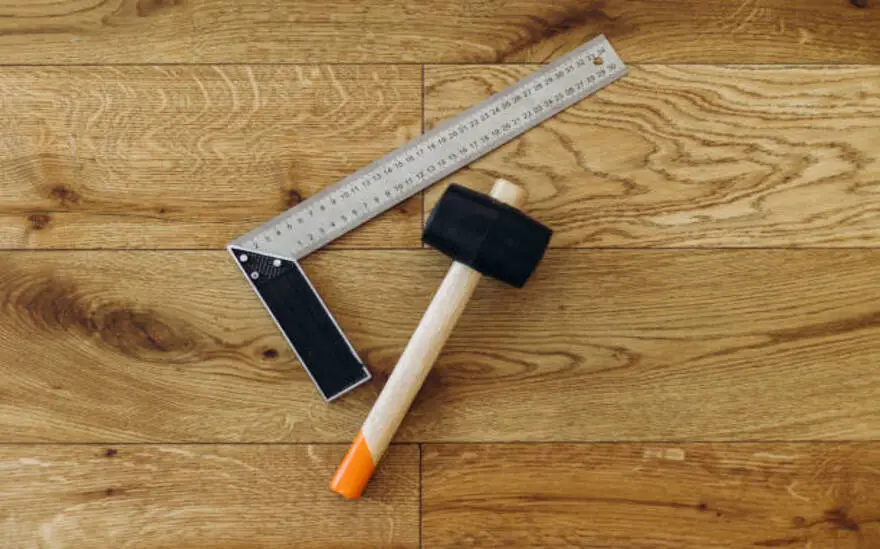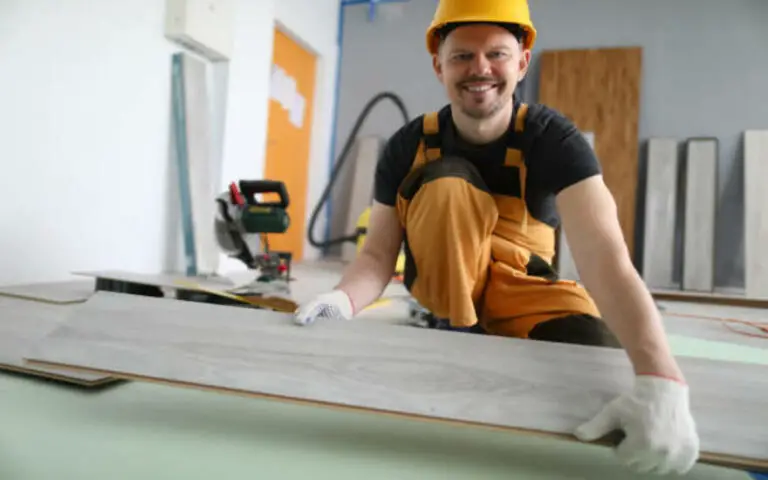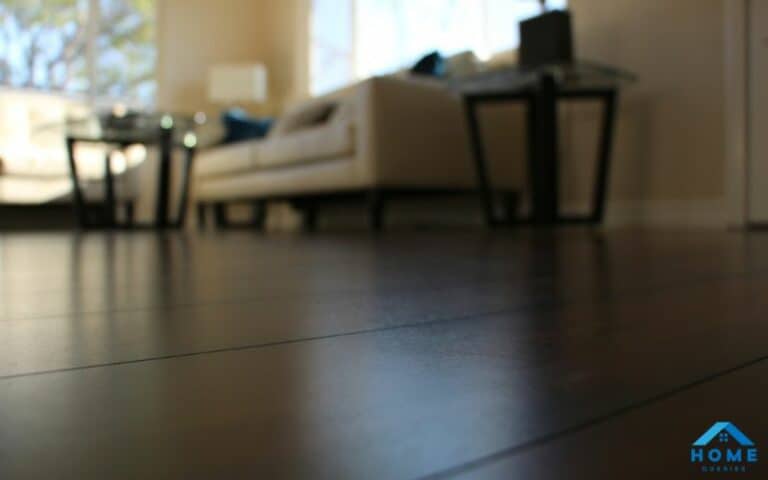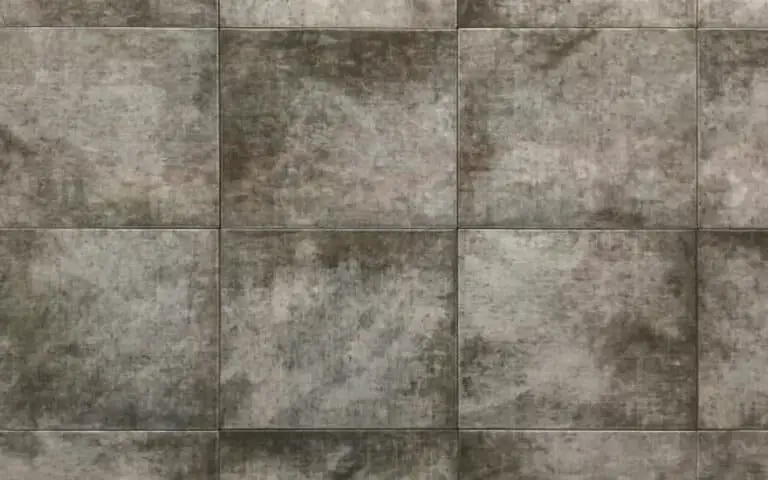If you’ve ever found yourself dealing with water damage on your laminate flooring, you know how stressful it can be. In this blog post, I’ll share some tips for drying out laminate flooring that has water underneath it. I’ll also provide helpful advice on preventing similar issues from occurring in the future. Step-By-Step:

Step 1: Soak Up as Much Water as Possible
In the first step of drying out laminate flooring with water under it, it’s important to soak up as much water as possible. This will help minimize the amount of water damage and help keep mold from growing.
To do this, you’ll need to use a mop, towels, or a vacuum to soak up standing water. Once all the standing water has been removed, you can remove the trim and flooring pieces. By taking these steps, you can ensure that your laminate flooring will be dry and safe for future use.
Step 2: Remove the Trim
Once the water is removed, it’s time to remove the trim. You’ll need to use a flathead screwdriver or putty knife to loosen it and carefully pry it away from the wall.
Make sure to take extra care, so you don’t damage the trim or wall. Once the trim is removed, you should be able to see the water that’s pooled beneath it. Use a wet/dry vac or shop vac to remove as much of this water as possible.
Step 3: Remove the Flooring
When removing the laminate flooring with water underneath, it’s important to take your time and be careful. First, you’ll want to remove the trim around the affected area. Then, using a flathead screwdriver and a hammer, carefully pry up the laminate planks and set them aside.
Please keep track of how they were laid down so you can put them back in place once they are dry. Before removing each plank, check underneath for excess water and use a wet/dry vacuum to suck it up if needed. Once the flooring has been removed, you’re ready to move on to the next step.
Step 4: Wipe the Water on the Laminate Floor
Once you’ve soaked up as much water as possible and removed the trim and flooring pieces, it’s time to wipe the remaining water on the laminate floor. It’s important to do this carefully, as you don’t want to damage the flooring.
I recommend using a clean cloth or a sponge and wiping in a circular motion so that all the water is absorbed. Make sure to get into all of the crevices and get up any standing water that may be present. After wiping up the water, dispose of any excess liquid and move on to the next step in drying your laminate floor.
Step 5: Use Fans to Improve Air Circulation
In Step 5, it’s important to use fans to improve air circulation. I recommend using as many fans as possible so that air is evenly circulated throughout the space. Fans will help dry the floors faster and effectively reduce humidity levels in the area.
I suggest positioning the fans in different room areas to ensure more effective circulation. Additionally, if you can access the floor from a lower level, place the fans for more efficient drying.
Step 6: Use a Dehumidifier
Once you have removed all the water from the laminate flooring and wiped any excess moisture, you should use a dehumidifier to help the drying process. A dehumidifier will help eliminate moisture from the air and get your laminate flooring back to its pre-water-damaged state.
This is an important step in drying, as it will help speed up the process and ensure that your laminate flooring is dry. Be sure to place the dehumidifier near the affected area to work more efficiently, and keep an eye on it – you may need to add more water as it collects moisture from the air.
Step 7: Let the Laminate Floor Dry
Once the water has been removed, it’s time to let the laminate flooring dry. This is an important step in preventing water damage and mold growth. To help speed up the drying process, place fans around the area to improve air circulation and a dehumidifier to extract any remaining moisture.
It’s also a good idea to check the floor periodically to ensure that all areas are completely dry. Once everything is completely dry, you can put the trim back in and replace the laminate flooring. Doing this will ensure your laminate flooring remains in good condition for years.
Step 8: Put the Trim Back In
After drying the laminate flooring, it’s time to put the trim back in place. Start by measuring where the trim will go and then cut it to size. Use a miter saw to ensure all corners are cut at exact angles.
Make sure to nail the trim securely and use a putty knife or caulking gun to seal all gaps between the boards. Once everything is in place, you’ll have a neat, finished look. Be sure to take time and ensure everything is properly secured before moving on to the next step.
Step 9: Put the Laminate Flooring Back In
Once the laminate flooring has been dried and disinfected, it is time to put it back in. To do this, start by laying the planks down in the same position as before. Make sure that all pieces are level and secure.
Once the planks are in place, you can use a hammer and nails to secure them to the subfloor. When the flooring is placed and secured, you can put the trim back in its place. This will help keep your laminate flooring looking good for years to come.
How to prevent water damage on Laminate Flooring?
Preventing water damage on laminate flooring is important for maintaining its integrity and longevity. To do this, it’s important to take some precautionary measures. Silicone should be used to prevent any damage from occurring.
Caulk the expansion gap to ensure a tight seal, and then cover the top coat with polyurethane. This will help to keep moisture out and protect the flooring from further damage. Sealing the locking mechanisms is also important so water can’t seep through them.
Finally, buying waterproof laminate flooring is a good idea if you live in an area prone to flooding. This will help to ensure that your flooring won’t be damaged by water. These steps will help keep your laminate flooring looking great for years to come.
How long does drying laminate flooring take?
When it comes to drying out laminate flooring, it can take anywhere from 24 to 48 hours for the floor to dry out fully after a flood.
However, it usually takes 12 to 36 hours to get the job done if you’re utilizing dehumidifiers and high-volume fans. The entire area could take weeks to dry completely if you’ve already installed the laminate flooring.
Getting rid of any water still present is also important by using a wet-dry vacuum. This will help reduce the chances of mold growth and other potential damages. Remember that time is of the essence if you’re ever dealing with a flooded laminate floor!
The faster you get it dried out, the better your chances of avoiding major water damage.
How soon does mold grow?
Mold growth is one of the most concerning issues regarding water damage on laminate flooring. We all know that water can easily penetrate the laminate, so it’s important to know how quickly mold can start to grow.
It’s essential to act fast and take the necessary steps to dry the affected areas. Fortunately, mold only takes 24 to 48 hours to grow, so there is still time to stop it before it can spread.
Once you’ve soaked up as much water as possible, remove the trim and flooring, wipe down any remaining water, and use fans or a dehumidifier to help improve air circulation and speed up the drying process. With proper maintenance and care, you can prevent mold from taking hold in your laminate flooring.
Does water under laminate cause mold?
Yes, water under laminate can cause mold. The speed of this process depends on the type of water present.
Tap water from a pipe leak or overflowing sink should be removed immediately. If there is less than an inch of water, it can be soaked up using a towel or mop.
Any damaged molding or trim should be removed and the floor wiped with a damp cloth. Fans can improve air circulation, and a dehumidifier should be used to dry the laminate flooring.
Ultimately, it is important to remember that any standing water should be removed immediately and that proper drying methods should always be used to prevent moisture buildup and mold growth.
Summary
I’ve seen that drying laminate flooring with water under it is tricky. It requires removing the trim and flooring, wiping up any excess water, using fans and a dehumidifier to improve air circulation, and letting the floor dry before replacing the trim and flooring.
This can take several days. In addition, it’s important to take steps to prevent water damage in the future, such as taking shorter showers or drying towels properly. If you are dealing with water under laminate in the future, save a few extra boards from your original install to use for repairs.






